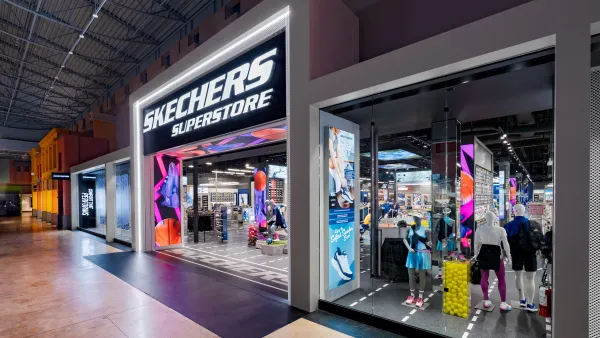Dive Brief:
-
Wal-Mart is gaining kudos from several quarters for its new focus on e-commerce and plans to slow down store openings, although not all observers are sold on the approach.
-
Financial services firm Cowen & Co. suggests that to succeed in a world dominated by Amazon, Wal-Mart must leverage its mobile application to help customers save time while relying on its brick-and-mortar stores to provide services like healthcare, pharmacy, food and other differentiators not available online, Fortune reports.
-
A number of analysts also point to Wal-Mart's $3.3 billion acquisition of e-commerce upstart Jet and its algorithm-based “basket building” attributes as a path to growth, while others are not so sure.
Dive Insight:
Support for Wal-Mart’s new focus on e-commerce appears to be building. The change is so profound that “this company over time will look like an e-commerce company,” Wal-Mart Stores CEO Doug McMillon told analysts gathered at its annual investors conference last week.
At that meeting, Wal-Mart Stores executives detailed plans to pivot toward e-commerce, earmarking $11 billion in capital spending to boosting online sales while drastically slowing down the number of new physical stores the company opens. Wal-Mart will open just 35 new supercenters in fiscal 2018 — half as many as the 69 it opened last year — and will open just 20 new Neighborhood Market stores in the same period, way down from the 161 it opened in 2015.
In crunching the numbers (and playing the guessing game) on Wal-Mart’s plans, several analysts point to the retailer’s massive penetration in brick-and-mortar as an asset to its online sales. And several kept the focus on Amazon, noting that big changes are necessary if Wal-Mart is to catch up to the online giant. Kantar Retail and Cowen both noted overlap in the two retailers’ penetration.
“Wal-Mart is a brick-and-mortar retailer that’s trying to strike a balance and trying to remain relevant,” Laura Kennedy, Kantar director of retail insights wrote, according to MarketWatch. “By our account, Wal-Mart and Amazon are neck-and-neck with penetration in American households… It’s a battle to be America’s retailer because there’s a lot of competition.” Cowen’s note adds that nearly half of Amazon Prime customers (42%) also shop at Wal-Mart.
But such raw numbers don’t reflect that Amazon’s extremely sticky Prime membership base skews much younger and wealthier than Wal-Mart’s: A 2015 survey of more than 4,000 consumers conducted by Kantar Retail reveals that the average Wal-Mart customer is a white, 50-year-old woman with an annual household income of $53,125.
Among the retailers studied by Kantar, millennials most often choose to shop at Target, whose average customer is younger (by five years) and wealthier (by $12,000 annually) than the typical Wal-Mart shopper. Even dollar stores, which cater to a similar demographic as Wal-Mart, are doing a better job of attracting millennials (including wealthy millennials), thanks in part to those stores’ more convenient, less suburban locations.













